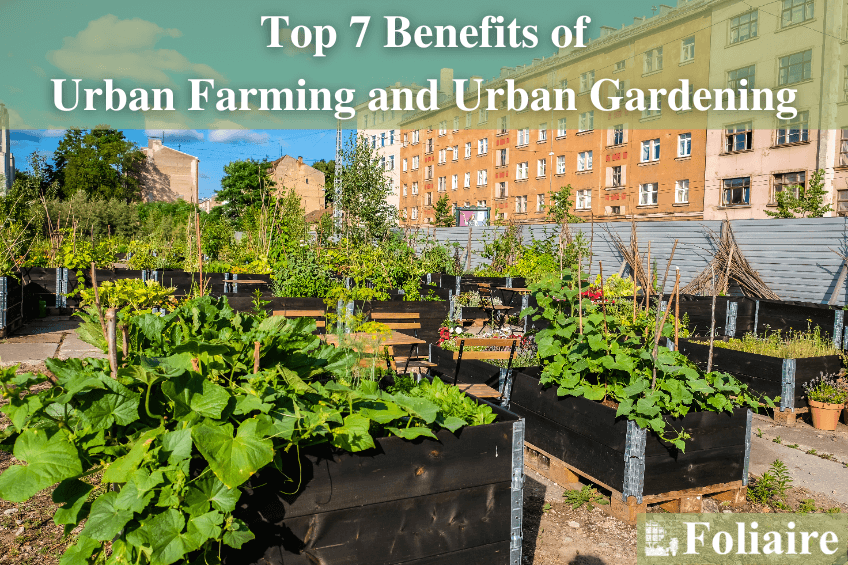The Only Guide to City Blooming
The Only Guide to City Blooming
Blog Article
Excitement About City Blooming
Table of ContentsCity Blooming - An OverviewThe 7-Minute Rule for City BloomingThe 10-Minute Rule for City BloomingThe 9-Second Trick For City BloomingSome Known Details About City Blooming
Nature has amazing impacts on our physical and mental wellness, so it's not a surprise that an easy delicious on a desktop or some potted herbs on a windowsill can quickly boost a space. Take those plants an action additionally, and you'll cross into the territory of metropolitan gardening, which brings a lot more advantages to individuals and areas alike.What Are Urban Gardens?Urban horticulture, sometimes calledcity horticulture, is defined as "the process of cultivating eco-friendly rooms in city settings. "It encompasses a variety of tasks from urban farming to patio yards to community gardens - eco-friendly practices. Urban gardens can be often tended by individuals, teams, companies, or organizations. The amount and range of food grown can vary commonly, in addition to the dimension of the job itself, however metropolitan gardening initiatives are all rooted in a city setup.
Whether they are composed of a collection of pots on a terrace or a cluster of stories on a vacant whole lot, these gardens offer more than food, using a host of environmental, economic, and social benefits. Since fruit and vegetables is expanded in regional setups instead of far-away ranches, metropolitan gardening minimizes transportation needs, as a result minimizing carbon exhausts.
The City Blooming Ideas
Lasting and organic agriculture eliminates or reduces a lot of the environmental damage that would certainly be incurred by commercial farming methods. Environment-friendly spaces in cities help lower the city heat island result. Urban farming promotes local economies and sustains regional food manufacturers. Neighborhood gardening projects commonly offer food at little or no expense, which aids reinforce food spending plans and increase food safety and security. Urban yards can be devices of social change that address injustices, systemic bigotry, and community development issues. Here at Appetite For Change, we utilize food as a device to build health and wellness, riches, and social adjustment in North Minneapolis. We bring people together to learn, prepare, eat, and grow food, developing modification that lasts.
Search our store, take into consideration volunteering, or give away today to sustain our incredible impact in North Minneapolis! With each other, we can produce well-rooted and flourishing modification!.

The key lesson we, as soon as again, need to find out is that cities are not divorced from nature. https://www.nulled.to/user/6237247-cityblooming. While these fields of research study advertise cities as advantageous, click for more info no city is best not also close, and the vulnerabilities and affiliations of the worldwide supply chain has actually impacted all of us in unpredicted ways.
7 Easy Facts About City Blooming Shown
I will take a look at designs from the past that advertised metropolitan yards and garden enthusiasts, and reveal what worked and what did not. I will discuss the chances and difficulties of being an urban garden enthusiast, what is needed to establish up a garden of your very own, and what laws and criteria stand in the means of making cities much better at promoting metropolitan yards.
The amount of time threw away obtaining to and from conventional work environments has actually been well documented. One noteworthy research ended that before the pandemic, Americans threw away approximately 54 hours a year commuting. The gathered unfavorable results of contamination and anxiety that result from commuting alone by automobile as most Americans do are significant.
The ability to come to the office for cooperation and culture, and remain home for focused work is a concept that saves time, is much better for the setting and is a smarter use of limited resources. What hasn't yet taken hold is the link in between these changes in habits and how cities might respond.
4 Easy Facts About City Blooming Explained
What are the wellness impacts of our cities instantly overdesigned for autos? Exactly how can our city framework (roads, energies) do much better, not just as conduits to relocate people and products, but as contributors to natural systems? Urban sensations such as smog, poor water quality and the 'warmth island impact' can be minimized by greening our streets, amazing our lorries and planting our parking area.
In a current article in the Wall Street Journal, Richard Florida discussed the sensation of 'zoom cities,' which attract remote employees by developing a picture of a greater top quality of life (eco-friendly practices). He composed: "For cities, remote job transforms the focus from enticing business with unique offers to enticing talent with services and services
Urban horticulture currently has lots of options to assist you grow food any place you have area, such as with container gardening, hydroponic gardening, and rooftop gardening. This implies you can manage the location where you grow the food, and stress less about ecological problems like dry spell or winter. You can choose what you intend to grow, exactly how you intend to grow it, and where you desire to expand.
Not known Facts About City Blooming
Expanding mass-produced food with typical farming techniques takes a great deal out of the earth. Beyond the lots of sources that are utilized on the ranch, the food then has to be transferred from where it is expanded to a store near you. That needs burning a lot of gas. Generally in the U.S., food is currently transferred between 1,500 and 2,500 miles to get to the customer.

Report this page